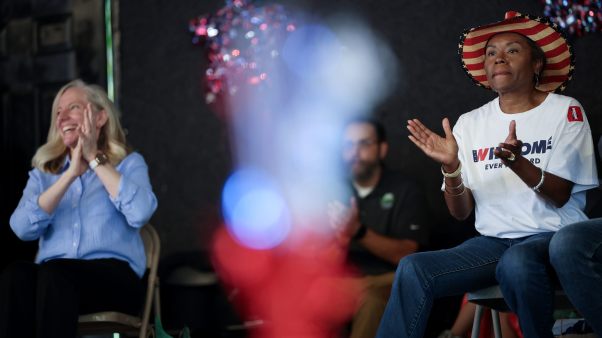The wedding of renewal and traditional church music can be fraught with difficulties. Some people wonder if organ and guitar really go together, if drums add to worship, if flutes detract. Can instruments geared to rock music harmonize with a classical style? And how does one get the congregation to sing—much less sing in parts?
George Mims, an innovative organist/choirmaster in Charleston, South Carolina, has combined renewal and traditional music on a national scale. Educated at Baylor University and Union Theological Seminary in New York, Mims was until recently a member of the Episcopal Standing Commission on Church Music. He is largely responsible for introducing renewal music into the Episcopal church—folk music that is generally but not exclusively associated with the charismatic renewal—beginning with a supplement to the 1982 Episcopal hymnal. Songs for Celebration, a thin book of renewal music for traditional settings, contains enough performance notes for a small orchestra, plus dance notations, guitar chords, strum charts, and percussion motifs.
From Rhythm To Plainsong
For 14 years Mims pioneered renewal music at Church of the Redeemer, a charismatic Episcopal parish in Houston. There, he set traditional hymns to upbeat rhythms, and charismatics in the congregation learned Latin motets, plainsong, and the music of Franz Schubert. Believing the classical tied in naturally to the charismatic, he lobbied successfully to combine the two, all the while keeping the church music from sliding into what he termed “ditties.” Also at Redeemer, Mims worked with Graham and Betty Pulkingham and Mimi Armstrong Farra, other key renewal composers in the Episcopal Church.
At Redeemer, Mims evolved a philosophy of worship. Briefly, he believes that worship must come from peoples’ hearts, that they must “own” the worship. “It means having part of the responsibility for what’s going to happen,” he said. “If you don’t own it, you can’t sell it.” He trained his choir at Redeemer to function as worship leaders, and the members pastored and coached each other. When a Hispanic car mechanic who spoke broken English and could not match pitches asked to join, choir members taught him how to sing, to read music, and to speak better English. He became a skilled tenor and a folk music leader among other Hispanics—and eventually a priest at the parish.
“Most people don’t know what to do with anyone who doesn’t sing well,” Mims says. “Churches would do better to look for good teachers rather than good performers” from within the church. He carried these concepts to his next parish, Saint George’s and Calvary Episcopal Church in Manhattan, where he was assigned to Saint George’s and got to prove his theories again. After the church’s paid choir had been dismissed, Mims and his wife—the codirector—found themselves with six female volunteers.
Saying he tends “to build on a community of praise basis,” the Mimses tell how they taught the sextet to sing together. “I like to teach volunteers from scratch so they can understand the music inside and out,” he says. “You can set them free to abandon themselves to worship.” Soon part of the choir—the Saint George’s Singers—made incursions into the community, performing renewal music at local street fairs. The sight and sound of these lively singers attracted more volunteers, and eventually the Mimses had a 26-member choir with two professional flutists, a trap drummer, a guitarist, and an electric-bass player. “It’s very difficult to do anything like that in Manhattan,” observes Alec Wyton, an Episcopal instructor at the Manhattan School of Music.
Radical Reformers
The Radicals, drawn from Myron S. Augsburger’s book Pilgrim Aflame, chronicles the beginnings of the Radical Reformation, whose effort to create a pure church of baptized believers separate from the world led to the rise of the Anabaptists, or rebaptizers.
The film is a history and a love story, giving it broad appeal outside the church. As in Chariots of Fire, Christianity won’t offend because Jesus is tucked away harmlessly in the past. Christian filmmakers, of course, face the challenge of producing a con temporary Christian film with artistic merit.
Apostate Anabaptist William Reublin narrates the story of Michael and Margaretha Sattler, who left the Catholic church, married, and became leaders in the Anabaptist movement, which faced bloody persecution on all sides. Michael is tortured and burned at the stake, and Margaretha drowns three days later. Unfortunately, viewers unfamiliar with this era may not understand the Anabaptists’ motives or the mingling of church and politics, and the Reformers’ position on church-state affairs is never clearly explained.
But despite two centuries of bloody persecution, the Anabaptist movement survived. Their beliefs surface today among such groups as Baptists, Mennonites, Amish, nondenominational churches, and in the U.S. Constitution.
The Mennonite film group Sisters & Brothers, Inc., originally planned the film for churches, but was convinced to upgrade to 35mm for general release. Volunteer labor and cash donations brought the film in for $3 million—though at times the shoestrings show.
Despite its flaws, The Radicals has generally high production values. It is a major step forward in Christian film-making. Its world view is truly Christian, but occasional violence may preclude family viewing.
By David W. Beard, a free-lance writer in Woodinville, Washington.
Worship With Drum And Guitar
Mims next set his sights on the congregation. When he realized they were neglecting their hymnbooks in expectation of having the choir perform all the music, he stopped the organ one Sunday in the middle of a hymn and began to conduct them from the middle of the nave. “They were real Episcopalians,” he noted. “They won’t do anything unless directed, but when told what to do from the front, they do it. We won the battle in the course of one hymn.”
Attendance at Saint George’s jumped—from about 40 to close to 200. Songs of Celebration showed up in the pew racks, a drum-and-guitar combo played along with the organ, and worshipers left their pews during Communion to gather around the altar and sing. Overflow crowds of 1,400 crammed the church for its annual Christmas candlelight service, which Mims did on a grand scale using carols, liturgical dancers, and renewal music.
In October of last year Mims became organist/choirmaster at Saint Philip’s Episcopal Church in Charleston, the diocesan flagship church, which uses evangelical, traditional, and charismatic elements.
“Music,” says Mims, “is an emotional issue.” But so is Mims. He admits his methods demand the most from people. As one of his former choristers at Redeemer commented, “George was someone you hated and loved at the same time—and he made you do both.”
By Julia Duin, religion writer for the Houston Chronicle.
ARTBRIEFS
Wish We’d Been There
Last March, the Black Music Caucus, an advisory group that promotes black music experts within the Music Educators National Conference, sponsored a national gathering of the best black gospel choirs. It is not surprising to find the Mount Nebo Baptist Church Youth Choir among them. But also there is the U.S. Air Force Academy, which has a top-flight gospel choir—as do some state universities.
Trained to sing, chant, speak, sway, and step like a drill team, the choirs sang with enthusiasm and precision. The music was varied, not suffering from the dull sameness that sometimes characterizes gospel music gatherings.
How do we know? We watched the video: four 60-minute tapes available from Ozman, Inc., in New York City. The production employs special effects, though without razzle-dazzle. Unfortunately, the sound is too often muffled and the balance just plain wrong—drums louder than the piano, which is often louder than the choir, which is usually louder than the soloist, who can be seen but not heard.
But after viewing the tapes, we wish we’d been there.
Art in Your Mailbox
Two new quarterly magazines by and for creative Christians made their debuts this past spring.
Image: A Journal of the Arts and Religion was launched by individuals who “represent a growing number of artists and theologians who believe that the lack of a journal of the arts and religion constitutes a serious gap in our intellectual life,” according to editors Harold Fickett and Gregory Wolfe. The premiere issue includes names well known among Christians interested in the arts—fiction by Larry Woiwode, poetry by Luci Shaw, an interview with Frederick Buechner, memoirs by Virginia Stem Owens. A full-color section reproducing paintings by Steve Hawley rounds out the issue. Image is published by St. Caedmon Foundation, a division of the Hillside Review, Inc.
Meanwhile, north of the border, Canadian Steve Stanton’s Skysong Press has introduced Dreams & Visions, subtitled “New Frontiers in Christian Fiction.” D & V is a low-budget publication; subscribers are urged to vote for “best short story of the year” to determine which writer will be paid this year for his or her efforts.
Through his other quarterly publication, Christian Vision—a low-key, Writer’s Digest-type of publication—Stanton is further challenging Christian writers to use their gifts to produce high-quality work that will influence the world for Christ.
The two new arts publications are a decade behind an Australian counterpart, Studio, which just marked its tenth anniversary.
Calling All Artists
Sacred Arts, a highly regarded juried art show cosponsored by the Billy Graham Center Museum and First Presbyterian Church of Wheaton (Ill.), is calling for entries in the eleventh annual exhibit. The only juried all-media American show on sacred themes, Sacred Arts offers cash prizes totaling $1,250, including a top award of $400 for Best of Show. Slides of work that reflects a Christian perspective must be submitted for judging by November 10.
Interested artists should contact James Stambaugh at the Billy Graham Center Museum at Wheaton College. The show opens March 1, 1990.
By David Neff and Carol Thiessen.










